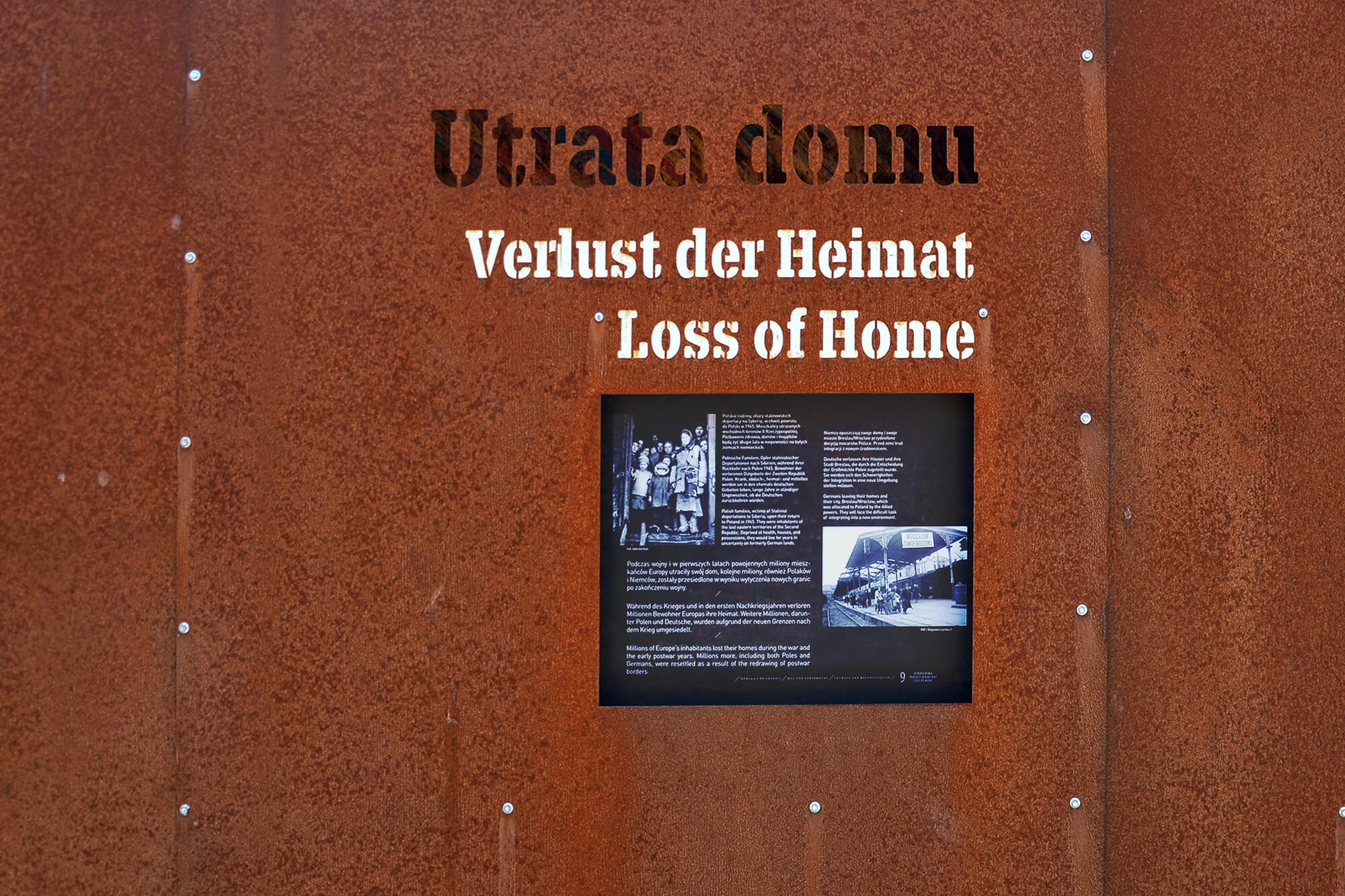Courage and
reconciliation
-
Shift of the Polish borders to the WestAfter World War II the borders of Central and Eastern Europe were moved. This had been decided by the Allies (Great Britain, USA, Soviet Union) at the Yalta and Potsdam Conferences at which the Soviet Union had great influence in. The eastern Polish territories were claimed by the Soviet Union, whereas Poland received almost all German territories east of the Oder-Neisse line. About 12 million Germans had to leave their homeland which became Polish territory. In some cases they could not return to their homeland after having fled the Red Army. Several hundred thousand people died. From 1946 about 1.1 million Poles had to leave the former eastern territories of Poland. Some of them as well as many of the Poles who were deported to Siberia during the war and who were no longer able to return to their new homeland in the Soviet Union came to the former German territories.

Von T.M. - Eigenes Werk, CC BY-SA 3.0, https://commons.wikimedia.org/w/index.php?curid=32074576
-
Forced migration of the population in Lower Silesia
Lower Silesia also belonged to the territories that became Polish after the Potsdam Conference in the summer of 1945. The first refugee movements west from the Red Army and arbitrary forced migration of the Germans by Polish militias and military already began in autumn 1944. The arrival of many Poles from the East intensified housing shortages and supply problems. The systematic forced resettlement of the German population, especially in the Soviet and British occupation zones, took place only in 1946, parallel to the forced resettlement of the Poles, which had to leave the former Polish eastern territories. Both Germans and Poles did not have much influence on where they would end up.
-
Keisau becomes KrzyżowaBefore the end of war a large number of the Kreisau population fled to the south, driven by fear of the front line coming closer. They soon returned to their village which ultimately was spared from warfare. In May 1946 the forced resettlement of Germans from Krzyżowa began. Most inhabitants of Kreisau were brought to the Soviet and British occupation zones.
„Most of the people said: 'We´ll probably be able to come back after a few years.' The fact that it would not work out like that, has not been known at the time” (Mrs. P. from Kreisau)*
*Source: Doyé, S., Hilker U.: Alltag in Kreisau/Krzyżowa. Fragen an Polen und Deutsche.



